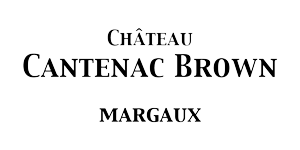Chateau Cantenac Brown, Grand Cru Classé from 1855, in Margaux was founded 200 years ago by a Scottish John Lewis Brown. Recognizable by its spectacular Tudor-style chateau, Cantenac Brown is still family owned today and has announced the construction of a new, unique winery made entirely of raw earth.
Preserving red wine is a major issue for all wine lovers. Indeed, whether you buy the wine during the primeurs or you wait a little to get a beautiful bottle of a grand cru classé of 1855, there are great chances that your wine will improve with time. However, it is important to store red wine in the right conditions to ensure optimal aging. The teams at Château Cantenac Brown give you the keys to storing your red wine properly.
The temperature for storing red wine
The temperature is the first element to keep your red wine well. Thus, to keep your red wine well, you can keep it between 12 and 14°C. If the tasting temperature can vary depending on the type of bottle you serve, all wines, whether red, white or rosé, but also champagne, can be kept at the same temperature. Consequently, when setting up your wine cellar, you must ensure that you choose a stable temperature that is adequate for storing red wine. A temperature that is too high contributes to a rapid evolution of the wine, which could quickly disappoint you. On the other hand, a temperature that is too low blocks the evolution of the wine until it no longer fully expresses its terroir. If the temperature varies significantly, your wine could suffer from thermal shock, which would damage it. As you can see, the temperature at which a red wine is stored is an important element to guarantee its ageing.
Hygrometry for aging your red wine well
Temperature is not the only element that determines the good storage of red wine. Indeed, it is also important to focus on the hygrometry, that is to say the level of humidity of the place in which you keep your red wine. Thus, the ideal hygrometry for the conservation of your wine is between 60 and 75%. If the humidity level of your wine cellar is too low, the corks of your bottles could dry out and thus degrade. On the other hand, too much humidity will cause the labels to deteriorate. It is therefore crucial to store your wine at the right hygrometry.
Other factors for aging red wine
The temperature is the first element to keep your red wine well. Thus, to keep your red wine well, you can keep it between 12 and 14°C. If the tasting temperature can vary depending on the type of bottle you serve, all wines, whether red, white or rosé, but also champagne, can be kept at the same temperature. Consequently, when setting up your wine cellar, you must ensure that you choose a stable temperature that is adequate for storing red wine. A temperature that is too high contributes to a rapid evolution of the wine, which could quickly disappoint you. On the other hand, a temperature that is too low blocks the evolution of the wine until it no longer fully expresses its terroir. If the temperature varies significantly, your wine could suffer from thermal shock, which would damage it. As you can see, the temperature at which a red wine is stored is an important element to guarantee its ageing.
Movement is also a factor when storing red wine, so if a bottle has traveled or you bought it after your wine shop received it, let it sit flat for at least three weeks. It should only be moved if necessary. Similarly, make sure your storage area is not subject to vibration. Regular vibration can cause some of the chemical components in the wine to break down.
Your bottles should also be kept away from strong odors. You must keep them in a ventilated space where the air renewal is good. For example, keep your cellar away from an oil furnace or a laundry room.
Protect the label of your wine bottle
It is important to ensure that the label on your bottle of wine is well preserved. Indeed, you have waited many years before tasting this bottle of wine. It would be a shame to present a damaged label on your table. On the other hand, the golden label of Chateau Cantenac Brown is recognizable among all and always makes an incomparable effect. In this sense, it would be a shame to damage this label when storing your red wine. However, the humidity in your wine cellar may deteriorate the label over time.
Protecting the label also allows you to remember the bottles that are in your cellar and their vintage. Indeed, after several years, and if despite your efforts the label has not survived the humidity, you may not remember the bottle or its year. Therefore, in addition to protecting the label, we recommend that you keep a cellar book. As the bottles arrive in your cellar, write down the information about them and even their place in your cellar. You can also write down the date you open them. You can make your own cellar book from a blank notebook, buy a ready-made book in a bookshop or use a dedicated application.
Thus, to keep your wine well, you can store your bottles in a tissue paper which allows to keep the bottle in the state of its delivery. If the bottle you have is not wrapped in tissue paper, you can choose to wrap it in cellophane. This will protect the label from humidity and you will be able to keep your red wine in like new condition!
The different types of cellars
In many homes, a dark, cool and ventilated space can be found in the cellar or under a staircase, for example. Before investing in an electric wine cellar, check that you do not have a space in your home that could naturally offer optimal conditions for storing wine. Indeed, if modern wine cellars are highly technical tools, a natural cellar remains the best option.
Nevertheless, if no corner of your home meets these conditions, you can invest in an electric wine cellar or even transform a space in your home into a wine cellar. You can store wine in a so-called service cellar. However, this is not the ideal choice if you want to age bottles for 10 or 20 years. If you want to keep your wines for 15 years and develop their full potential, choose an aging cellar. This is a refrigerated unit dedicated to long-term storage in optimal conditions. It is the closest solution to a natural cellar. The aging conditions are similar for all bottles, so you don’t need to multiply cellars for each color of wine.
Can all wines be aged?
If you have an adventurous spirit, you can keep any type of wine and see how it will evolve with time. Nevertheless, we prefer to warn you, you may be disappointed. Indeed if some red wines in their tinted bottle will evolve beautifully with time, white wine and rosé will not offer such good results.
A few simple clues on the bottle can tell you if a bottle is meant to be kept or consumed quickly. First of all, all wines sold in transparent bottles are generally not made to be preserved over time. Transparency lets light and UV rays through, and these are the enemies of wine. That’s why the bottles are often sold wrapped in tissue paper. The transparency is therefore decorative, the wine must be drunk quickly. Then, if a bottle is sold as “table wine” or “light wine”, it means that it must be drunk quickly.
The type of cork is also an indication. If it is sealed with wax, you can age the bottle. If the cork is not a cork but a synthetic cork or worse a screw cap, you should consume the bottle quickly. Thus, the majority of wines sold in stores must be drunk within 5 years after bottling.
Preserving an open bottle
It can happen; you open a last bottle to finish the meal, unfortunately, it doesn’t finish and you end up with half a bottle that you don’t know what to do with. Here we will give you some tips on how to best preserve the end of a bottle until the next meal.
First, it is important to understand that the problem with an open bottle is oxidation when in contact with air. If when you open your bottle, the oxidation has allowed the wine’s aromas to awaken, a long contact will turn your wine sour.
In order to limit the oxidation of your wine, we advise you to close the bottle after serving the glasses. To re-seal your bottle in the best possible way, we advise you to use a vacuum pump. This system allows you to get the air out of your bottle, and thus the oxidation process will be strongly slowed down. If you don’t have such a pump, use the cap of your bottle but be careful to use the same side of the cap. The side already used has less risk of damaging your wine. Then place your bottle in a cool place but avoid the bottom of your refrigerator.
In addition, the more wine in your bottle, the better it will keep. The idea is to minimize exposure to oxygen by reducing the surface area of the wine. We advise you to use half bottles if you have little wine left and to store them vertically.
You can keep your red wine for up to 48 hours; until the aromas are at their peak and before the taste is significantly altered. Dry white wines can be kept for an average of 3 days. Sweet white wines can be stored better thanks to the sugar they contain, which limits the development of bacteria. You can keep them up to one month after opening. Organic or natural wines are more sensitive to the action of the air and will keep less well. If you do not have the opportunity to finish your bottle, use the wine in a preparation .


